-
 Bitcoin
Bitcoin $106,754.6083
1.33% -
 Ethereum
Ethereum $2,625.8249
3.80% -
 Tether USDt
Tether USDt $1.0001
-0.03% -
 XRP
XRP $2.1891
1.67% -
 BNB
BNB $654.5220
0.66% -
 Solana
Solana $156.9428
7.28% -
 USDC
USDC $0.9998
0.00% -
 Dogecoin
Dogecoin $0.1780
1.14% -
 TRON
TRON $0.2706
-0.16% -
 Cardano
Cardano $0.6470
2.77% -
 Hyperliquid
Hyperliquid $44.6467
10.24% -
 Sui
Sui $3.1128
3.86% -
 Bitcoin Cash
Bitcoin Cash $455.7646
3.00% -
 Chainlink
Chainlink $13.6858
4.08% -
 UNUS SED LEO
UNUS SED LEO $9.2682
0.21% -
 Avalanche
Avalanche $19.7433
3.79% -
 Stellar
Stellar $0.2616
1.64% -
 Toncoin
Toncoin $3.0222
2.19% -
 Shiba Inu
Shiba Inu $0.0...01220
1.49% -
 Hedera
Hedera $0.1580
2.75% -
 Litecoin
Litecoin $87.4964
2.29% -
 Polkadot
Polkadot $3.8958
3.05% -
 Ethena USDe
Ethena USDe $1.0000
-0.04% -
 Monero
Monero $317.2263
0.26% -
 Bitget Token
Bitget Token $4.5985
1.68% -
 Dai
Dai $0.9999
0.00% -
 Pepe
Pepe $0.0...01140
2.44% -
 Uniswap
Uniswap $7.6065
5.29% -
 Pi
Pi $0.6042
-2.00% -
 Aave
Aave $289.6343
6.02%
Blockchain Creative Practice: Teach You Step by Step to Create High-Quality NFT Works
Creating high-quality NFTs involves preparing digital art, choosing the right blockchain and platform, minting, and promoting your work to potential buyers.
Jun 18, 2025 at 11:08 am
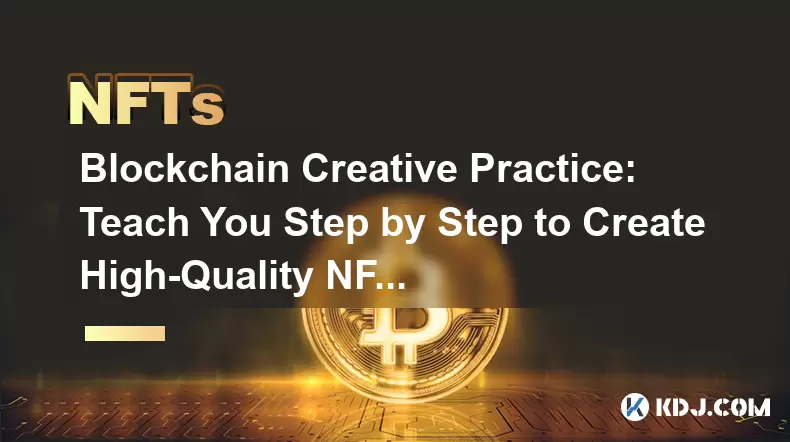
Creating high-quality NFT works involves a blend of creativity, technical know-how, and an understanding of the blockchain ecosystem. NFTs, or Non-Fungible Tokens, have become a popular way for artists, musicians, and creators to monetize their digital works. In this article, we will guide you through the process of creating and minting your own high-quality NFT artworks, ensuring that you have a clear understanding of each step involved.
Understanding NFTs and Their Importance
Before diving into the creation process, it's essential to understand what NFTs are and why they have become so significant in the digital art world. NFTs are unique digital assets that are stored on a blockchain, making them verifiable, secure, and indivisible. Unlike cryptocurrencies such as Bitcoin or Ethereum, which are fungible and can be exchanged on a one-to-one basis, NFTs represent ownership of a specific item or piece of content, often digital art, music, or collectibles.
The importance of NFTs lies in their ability to provide proof of ownership and authenticity for digital works. This has revolutionized the art world by allowing artists to sell their work directly to collectors without intermediaries, ensuring they receive a fair share of the profits. Additionally, NFTs can be programmed to include royalties, meaning the original creator can earn a percentage of sales whenever their work is resold.
Preparing Your Artwork for NFT Creation
The first step in creating a high-quality NFT is to prepare your digital artwork. This involves ensuring that your artwork is in a suitable format and resolution for minting on a blockchain. Here are some steps to follow:
Choose the right file format: Most NFT platforms support common image formats such as JPEG, PNG, and GIF. For video or music NFTs, MP4 and MP3 are widely accepted. Ensure that your file is in one of these formats to avoid compatibility issues.
Optimize file size: While high-quality images are desirable, large file sizes can lead to higher minting costs. Use tools like Photoshop or GIMP to compress your files without significantly compromising on quality.
Add metadata: Metadata provides additional information about your artwork, such as the title, description, and any relevant tags. This information is crucial for potential buyers to understand and appreciate your work. Some platforms allow you to add metadata directly during the minting process, while others may require you to include it in the file itself.
Choosing the Right Blockchain and Platform
Selecting the appropriate blockchain and platform is crucial for successfully minting your NFT. Different blockchains offer varying levels of security, transaction speed, and fees, while platforms vary in terms of user-friendliness and community engagement. Here are some popular options to consider:
Ethereum: The most widely used blockchain for NFTs, Ethereum offers robust security and a large, active community. However, transaction fees can be high, especially during peak times.
Polygon: A layer-2 scaling solution for Ethereum, Polygon offers lower transaction fees and faster processing times, making it an attractive option for creators.
Tezos: Known for its energy efficiency and low gas fees, Tezos is an eco-friendly alternative that is gaining popularity among NFT creators.
OpenSea: One of the largest NFT marketplaces, OpenSea supports multiple blockchains and offers a user-friendly interface for minting and selling NFTs.
Rarible: Another popular platform, Rarible allows creators to mint NFTs on Ethereum and Tezos, with a focus on community governance and artist royalties.
Minting Your NFT
Once you have prepared your artwork and chosen a blockchain and platform, you can proceed with minting your NFT. Here is a detailed guide on how to do this:
Create a wallet: To interact with the blockchain, you will need a cryptocurrency wallet that supports the blockchain you have chosen. For Ethereum, popular options include MetaMask and Trust Wallet. For Tezos, consider using Kukai or Temple Wallet.
Fund your wallet: You will need to purchase the native cryptocurrency of your chosen blockchain (e.g., ETH for Ethereum, XTZ for Tezos) and transfer it to your wallet. This will be used to pay for transaction fees during the minting process.
Connect your wallet to the platform: Navigate to your chosen NFT platform and connect your wallet by following the on-screen prompts. This will allow you to interact with the platform's smart contracts.
Upload your artwork: Once connected, you can upload your artwork to the platform. Follow the platform's guidelines for file formats and sizes, and ensure that you include all necessary metadata.
Set your price and royalties: Decide on the initial sale price for your NFT and whether you want to include royalties on future sales. Most platforms allow you to set a royalty percentage that will be automatically paid to you whenever your NFT is resold.
Confirm and mint: Review all the details of your NFT, including the artwork, metadata, price, and royalties. Once you are satisfied, confirm the transaction and pay the required gas fee. Your NFT will then be minted on the blockchain and listed for sale on the platform.
Promoting and Selling Your NFT
After successfully minting your NFT, the next step is to promote and sell it to potential buyers. Here are some strategies to increase your chances of a successful sale:
Leverage social media: Share your NFT on platforms like Twitter, Instagram, and Discord to reach a wider audience. Use relevant hashtags and engage with communities interested in NFTs and digital art.
Collaborate with other creators: Partnering with other artists or influencers can help you gain exposure and reach new audiences. Consider participating in NFT collaborations or joint exhibitions.
Participate in NFT events and exhibitions: Many platforms and communities host virtual events and exhibitions where you can showcase your work. These events can provide valuable networking opportunities and increase your visibility.
Offer limited editions or series: Creating limited editions or series of your NFTs can create a sense of exclusivity and urgency, encouraging potential buyers to act quickly.
Managing Your NFT Portfolio
Once you have sold your NFT, it's important to manage your portfolio effectively to maximize your earnings and maintain a strong presence in the NFT community. Here are some tips for managing your NFT portfolio:
Track your sales and royalties: Keep a record of your NFT sales and any royalties earned from resales. This will help you understand your earnings and plan for future projects.
Engage with your collectors: Building a relationship with your collectors can lead to repeat sales and increased loyalty. Respond to their messages, share updates on your work, and consider offering exclusive content or benefits to your top supporters.
Stay updated on market trends: The NFT market is constantly evolving, with new trends and opportunities emerging regularly. Stay informed about market trends, popular platforms, and upcoming events to stay ahead of the curve.
Diversify your offerings: Consider creating NFTs in different formats, such as video, music, or interactive art, to appeal to a broader audience. Diversifying your offerings can help you reach new buyers and increase your overall sales.
Frequently Asked Questions
Q: Can I create NFTs without any coding knowledge?
A: Yes, you can create NFTs without coding knowledge by using user-friendly platforms like OpenSea and Rarible. These platforms provide intuitive interfaces that guide you through the minting process, requiring no technical expertise.
Q: How do I determine the value of my NFT?
A: The value of an NFT can be influenced by several factors, including the uniqueness of the artwork, the reputation of the artist, the demand for similar works, and the overall market conditions. Researching comparable sales and engaging with the NFT community can help you set a competitive price for your work.
Q: What are the environmental concerns associated with NFTs?
A: Some blockchains, particularly Ethereum, have been criticized for their high energy consumption due to the proof-of-work consensus mechanism. However, many platforms are transitioning to more eco-friendly alternatives like proof-of-stake, and creators can also choose to mint on energy-efficient blockchains like Tezos.
Q: Can I transfer my NFT to another blockchain?
A: Transferring an NFT from one blockchain to another is not currently possible due to the unique nature of each blockchain's architecture. However, some platforms are exploring cross-chain solutions that may allow for this in the future.
Disclaimer:info@kdj.com
The information provided is not trading advice. kdj.com does not assume any responsibility for any investments made based on the information provided in this article. Cryptocurrencies are highly volatile and it is highly recommended that you invest with caution after thorough research!
If you believe that the content used on this website infringes your copyright, please contact us immediately (info@kdj.com) and we will delete it promptly.
- 2025-W Uncirculated American Gold Eagle and Dr. Vera Rubin Quarter Mark New Products
- 2025-06-13 06:25:13
- Ruvi AI (RVU) Leverages Blockchain and Artificial Intelligence to Disrupt Marketing, Entertainment, and Finance
- 2025-06-13 07:05:12
- H100 Group AB Raises 101 Million SEK (Approximately $10.6 Million) to Bolster Bitcoin Reserves
- 2025-06-13 06:25:13
- Galaxy Digital CEO Mike Novogratz Says Bitcoin Will Replace Gold and Go to $1,000,000
- 2025-06-13 06:45:13
- Trust Wallet Token (TWT) Price Drops 5.7% as RWA Integration Plans Ignite Excitement
- 2025-06-13 06:45:13
- Ethereum (ETH) Is in the Second Phase of a Three-Stage Market Cycle
- 2025-06-13 07:25:13
Related knowledge
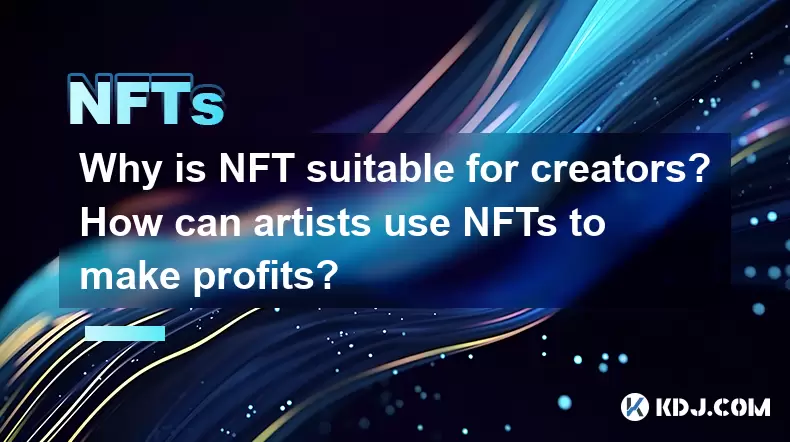
Why is NFT suitable for creators? How can artists use NFTs to make profits?
Jun 12,2025 at 09:42pm
Understanding the Role of NFTs in Empowering CreatorsNon-Fungible Tokens (NFTs) have emerged as a groundbreaking innovation in the blockchain space, particularly for creators and artists. NFTs offer a unique opportunity to tokenize digital assets, making them verifiable and tradable on decentralized platforms. For creators, this means being able to asse...

What are the ways to combine NFT and DeFi? How does mortgage lending work?
Jun 10,2025 at 10:57pm
Understanding the Intersection of NFT and DeFiThe non-fungible token (NFT) space has grown beyond digital art and collectibles, intersecting with decentralized finance (DeFi) to unlock new financial instruments. This integration enables users to leverage their NFTs in a permissionless, trustless environment. One of the most prominent ways these two ecos...
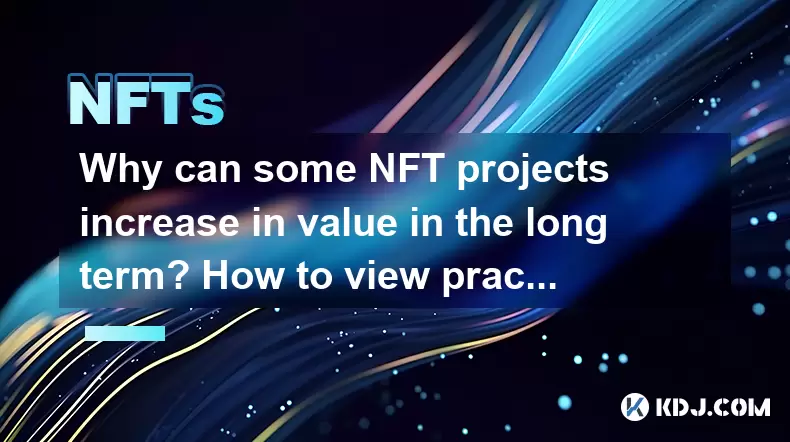
Why can some NFT projects increase in value in the long term? How to view practicality and empowerment?
Jun 10,2025 at 05:35pm
Understanding the Factors Behind Long-Term NFT Value AppreciationThe phenomenon of certain NFT projects appreciating in value over the long term has intrigued both investors and creators within the digital asset space. Unlike traditional assets, NFTs (Non-Fungible Tokens) are unique and often tied to digital art, collectibles, or utility-based tokens on...
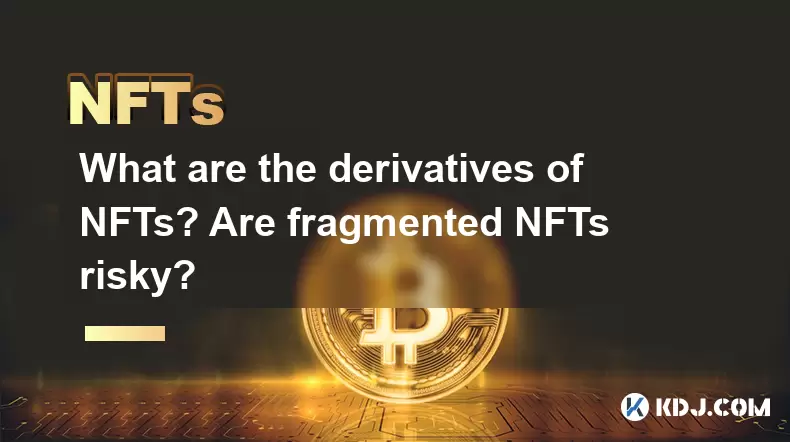
What are the derivatives of NFTs? Are fragmented NFTs risky?
Jun 16,2025 at 11:50am
Understanding the Derivatives of NFTsNon-Fungible Tokens (NFTs) have evolved beyond their initial applications in digital art and collectibles. As the blockchain ecosystem matures, various derivatives of NFTs have emerged to enhance liquidity, accessibility, and utility. These derivatives are essentially financial instruments or tokens that derive their...

How to use tools to monitor NFT market trends? Which data indicators are the most critical?
Jun 12,2025 at 08:02am
Understanding the NFT Market Monitoring ToolsTo effectively monitor NFT market trends, it's essential to use specialized tools that aggregate and analyze data from various blockchains and marketplaces. Platforms like DappRadar, CoinGecko NFT, and OpenSea Analytics offer real-time insights into trading volumes, floor prices, and project performance. Thes...
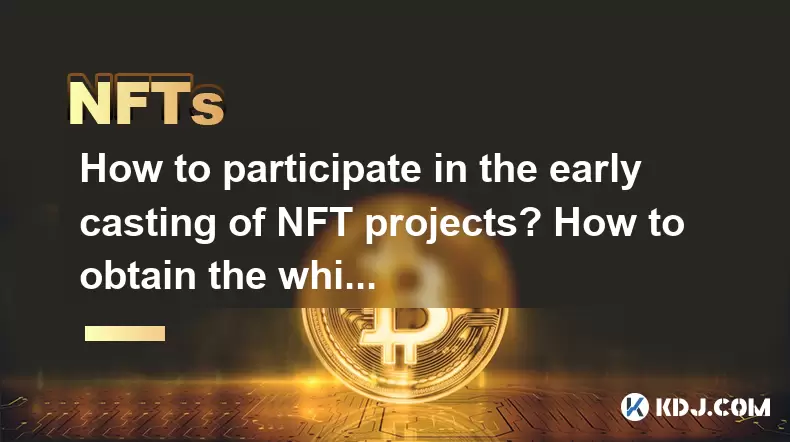
How to participate in the early casting of NFT projects? How to obtain the whitelist?
Jun 14,2025 at 09:00am
What Is Early Casting in NFT Projects?Early casting, often referred to as early minting or pre-minting, is a phase in many NFT projects where select individuals are allowed to mint (create) NFTs before the general public. This stage typically offers lower prices, exclusive benefits, and reduced competition, making it highly desirable for collectors and ...

Why is NFT suitable for creators? How can artists use NFTs to make profits?
Jun 12,2025 at 09:42pm
Understanding the Role of NFTs in Empowering CreatorsNon-Fungible Tokens (NFTs) have emerged as a groundbreaking innovation in the blockchain space, particularly for creators and artists. NFTs offer a unique opportunity to tokenize digital assets, making them verifiable and tradable on decentralized platforms. For creators, this means being able to asse...

What are the ways to combine NFT and DeFi? How does mortgage lending work?
Jun 10,2025 at 10:57pm
Understanding the Intersection of NFT and DeFiThe non-fungible token (NFT) space has grown beyond digital art and collectibles, intersecting with decentralized finance (DeFi) to unlock new financial instruments. This integration enables users to leverage their NFTs in a permissionless, trustless environment. One of the most prominent ways these two ecos...

Why can some NFT projects increase in value in the long term? How to view practicality and empowerment?
Jun 10,2025 at 05:35pm
Understanding the Factors Behind Long-Term NFT Value AppreciationThe phenomenon of certain NFT projects appreciating in value over the long term has intrigued both investors and creators within the digital asset space. Unlike traditional assets, NFTs (Non-Fungible Tokens) are unique and often tied to digital art, collectibles, or utility-based tokens on...

What are the derivatives of NFTs? Are fragmented NFTs risky?
Jun 16,2025 at 11:50am
Understanding the Derivatives of NFTsNon-Fungible Tokens (NFTs) have evolved beyond their initial applications in digital art and collectibles. As the blockchain ecosystem matures, various derivatives of NFTs have emerged to enhance liquidity, accessibility, and utility. These derivatives are essentially financial instruments or tokens that derive their...

How to use tools to monitor NFT market trends? Which data indicators are the most critical?
Jun 12,2025 at 08:02am
Understanding the NFT Market Monitoring ToolsTo effectively monitor NFT market trends, it's essential to use specialized tools that aggregate and analyze data from various blockchains and marketplaces. Platforms like DappRadar, CoinGecko NFT, and OpenSea Analytics offer real-time insights into trading volumes, floor prices, and project performance. Thes...

How to participate in the early casting of NFT projects? How to obtain the whitelist?
Jun 14,2025 at 09:00am
What Is Early Casting in NFT Projects?Early casting, often referred to as early minting or pre-minting, is a phase in many NFT projects where select individuals are allowed to mint (create) NFTs before the general public. This stage typically offers lower prices, exclusive benefits, and reduced competition, making it highly desirable for collectors and ...
See all articles

























































































